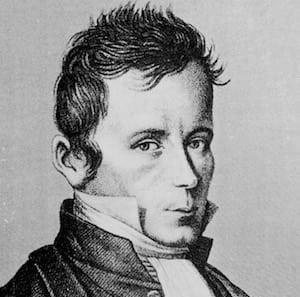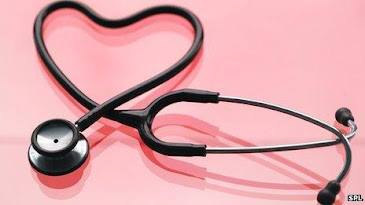Ebers Papyrus (1500 BCE -Before Common Era) and the Vedas of Ancient India around 1400 BCE are thought to have the earliest recorded reference to breath sounds (sound inside human breathing organ - the lungs).
Joseph Leopold Auenbrugger (1722-1809) is considered to be the father of the modern physical examination, which is based on percussion. Percussion of the chest was used regularly during the 18th century to reveal various sounds and to help outline enlarged organs or lesions in the chest.
Percussion Leopold Auenbrugger performed by knocking directly on the thorax with the finger or cupped hands. His discovery of the percussion sounds from the chest during inhaling and exhaling originates from his work in 1760 at the Vienna Military Hospital.
The word "stethoscope" originates from the Greek words "stetho" meaning "chest" and "scopein" meaning to view or observe.
The stethoscope was invented by the French physician Rene Theophile Hyacinthe Laënnec (1781-1826), a student of Corvisart and later physician to the famous Saltpetre and Necker Hospital in Paris. It was a unitubular cyclinder first made of paper and pasteboard in 1819 and later turned into wooden tube. He named it "LE CYCLINDER". He believed a method to diagnose chest conditions was needed, particularly for stout individuals where direct auscultation to the chest was either inadequate or embarrassing, especially for his female patients.Laënnec was a military surgeon during the Revolution and Napoleon era. He studied medicine in Paris with the great physicians Bichat and Corvisart. After graduation, he worked in the prestigious Paris hospitals Beaujon and Necker. He got a reputation of skilled doctor and had many clients.
In 1819 he summarized his studies with the stethoscope in a two-volume work on more than 900 pages. In those days, wooden stethoscopes made according to his instructions were sold in Piccadilly, London, for four shillings each. It was monaural and could be applied to one ear only.
Laennec had a special interest in diseases of the chest because tuberculosis was rampant during the 18th century; his own mother died of the disease. Laënnec's invention of the stethoscope originated from the difficulty of examining a fat young woman laboring under general symptoms
of heart problems. He hesitated to put his ear directly onto her chest, because she was a young girl. Therefore, during the examination, he rolled a piece of paper into a tube and placed one end of the tube on the girl's chest and the other end against his ear. The inspiration for this is said to be some children's play with wooden pieces that reinforced the sound of a scraper at the other end of the tree. To his delight, Laënnec discovered at finding that he could perceive sounds clearly and distinctly.
He continued his experiments and soon found that an aperture instead of solid wood was even better and that pine was the wood most suitable. This caused him to develop a tube in wood - the first monaural stethoscope.
His first stethoscope design was approximately 30 cm long, 2 cm in diameter, and cylindrical. He made it in three parts with a funnel-shaped section at the bell end. Laënnec stated that the complete device is best to hear heart sounds while the respiratory sounds are heard most clearly when the small funnel is removed.
James Hope (1801-1841) a medical graduate of Edinburgh University, and later physician to St. George’s Hospital, London, who spent some time in Laënnec’s clinic in Paris is credited with having influenced the acceptance of the stethoscope by the London medical community.
In 1826, the stethoscope was employed almost universally in France and extensively in Germany and less frequently in England. It was probably first used in the United States of America around 1821-1823.
Invention of stethoscope
Mountain Dew: A History of Innovation and Success
-
Mountain Dew, a popular citrus-flavored soft drink, has a fascinating
history that dates back to the 1940s. The beverage was originally created
by Barney a...





